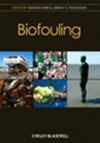硫酸盐还原菌诱导的不同纯金属的细菌粘附和腐蚀行为。
IF 2.6
3区 生物学
Q3 BIOTECHNOLOGY & APPLIED MICROBIOLOGY
引用次数: 0
摘要
在富集人工海水(EASW)中培养 14 天后,研究了四种纯金属(铁、镍、钼和铬)在硫酸盐还原菌(SRB)存在下的腐蚀行为。金属铁和金属镍的重量损失分别为 1.96 毫克/厘米-2 和 1.26 毫克/厘米-2。相比之下,金属钼和金属铬的重量损失极小,分别仅为 0.05 毫克/厘米-2 和 0.03 毫克/厘米-2。与 Mo(2.2 × 106 个细胞 cm-2)或 Cr(1.4 × 106 个细胞 cm-2)表面相比,Fe(4.0 × 107 个细胞 cm-2)或 Ni(3.1 × 107 个细胞 cm-2)表面的无柄细胞数较高。本文章由计算机程序翻译,如有差异,请以英文原文为准。
Bacterial adhesion and corrosion behavior of different pure metals induced by sulfate reducing bacteria.
The corrosion behaviors of four pure metals (Fe, Ni, Mo and Cr) in the presence of sulfate reducing bacteria (SRB) were investigated in enriched artificial seawater (EASW) after 14-day incubation. Metal Fe and metal Ni experienced weight losses of 1.96 mg cm-2 and 1.26 mg cm-2, respectively. In contrast, metal Mo and metal Cr exhibited minimal weight losses, with values of only 0.05 mg cm-2 and 0.03 mg cm-2, respectively. In comparison to Mo (2.2 × 106 cells cm-2) or Cr (1.4 × 106 cells cm-2) surface, the sessile cell counts on Fe (4.0 × 107 cells cm-2) or Ni (3.1 × 107 cells cm-2) surface was higher.
求助全文
通过发布文献求助,成功后即可免费获取论文全文。
去求助
来源期刊

Biofouling
生物-海洋与淡水生物学
CiteScore
5.00
自引率
7.40%
发文量
57
审稿时长
1.7 months
期刊介绍:
Biofouling is an international, peer-reviewed, multi-discliplinary journal which publishes original articles and mini-reviews and provides a forum for publication of pure and applied work on protein, microbial, fungal, plant and animal fouling and its control, as well as studies of all kinds on biofilms and bioadhesion.
Papers may be based on studies relating to characterisation, attachment, growth and control on any natural (living) or man-made surface in the freshwater, marine or aerial environments, including fouling, biofilms and bioadhesion in the medical, dental, and industrial context.
Specific areas of interest include antifouling technologies and coatings including transmission of invasive species, antimicrobial agents, biological interfaces, biomaterials, microbiologically influenced corrosion, membrane biofouling, food industry biofilms, biofilm based diseases and indwelling biomedical devices as substrata for fouling and biofilm growth, including papers based on clinically-relevant work using models that mimic the realistic environment in which they are intended to be used.
 求助内容:
求助内容: 应助结果提醒方式:
应助结果提醒方式:


